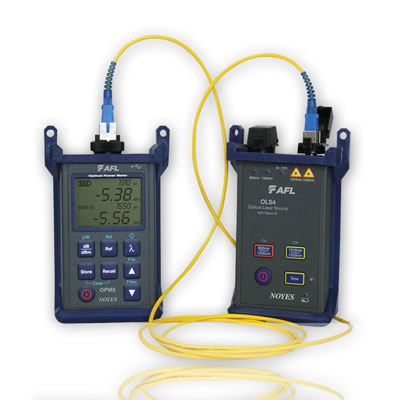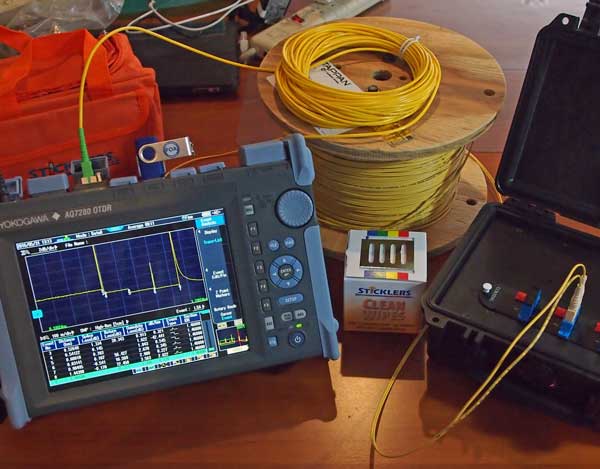Optical fibre testing equipment ensures reliability in fibre network installations.
Optical fibre testing equipment ensures reliability in fibre network installations.
Blog Article
Revealing the Trick Use Optical Fibre Evaluating for Effective Data Transmission
In the world of modern-day communication, optical fiber screening emerges as a crucial practice for enhancing information transmission. Understanding the multifaceted applications of optical fibre screening invites a much deeper exploration into its essential duty in forming the future of data interaction.

Relevance of Optical Fiber Testing
The importance of optical fibre testing can not be overstated, as it works as a critical component in making certain the reliability and efficiency of information transmission systems. In an era where high-speed interaction is paramount, any kind of shortages in fibre optics can lead to significant data loss and minimized efficiency. Consequently, rigorous screening procedures are important to confirm the integrity and performance of optical cords.
Checking allows for the identification of issues such as micro-bends, macrobends, and splice losses that could hinder signal top quality. It provides insights into the overall depletion and data transfer capabilities of the fiber, making certain that the network meets particular operational requirements. Routine testing not just boosts system efficiency but also lengthens the life expectancy of the facilities by identifying possible issues before they rise into expensive failures.

Kinds of Optical Fiber Tests
Various types of optical fibre examinations are conducted to guarantee the performance and reliability of fibre optic networks. These tests can be classified right into a number of crucial types, each serving a particular objective in analyzing the honesty of the fiber.
First, Optical Time Domain Name Reflectometry (OTDR) is a noticeable test that determines mistakes, interlaces, and adapters within the fibre. By sending out pulses of light and analyzing the mirrored signals, service technicians can identify issues along the fibre's length.
2nd, insertion loss tests assess the quantity of signal loss when light passes with adapters or splices, which is vital for maintaining network effectiveness.
Third, return loss tests determine the amount of light showed back in the direction of the source, supplying understandings right into the quality of connections and possible resources of disturbance.
In addition, continuity examinations make certain that the fibre course is total, allowing professionals to verify that the fibre is undamaged without any kind of breaks. resource fibre testing equipment.
Lastly, aesthetic fault locators utilize noticeable light to determine breaks or extreme bends in the fibre, assisting in quick troubleshooting. Jointly, these tests create a detailed technique to maintaining optimum performance in fibre optic networks.

Applications in Network Upkeep
In modern telecoms, efficient network upkeep depends heavily on optical fibre testing to identify and remedy concerns quickly. Normal screening makes certain that the network runs at optimum performance levels, lowering downtime and boosting customer experience.
Among the main applications of optical fibre screening in maintenance is the detection of mistakes, such as breaks, flexes, or improper connections. Strategies like Optical Time Domain Reflectometry (OTDR) allow technicians to situate these problems properly and evaluate the quality of the fiber web link. Additionally, loss screening confirms the integrity of the optical course, making certain that signal attenuation stays within appropriate restrictions.
Routine maintenance testing also assists in preventive procedures, identifying potential issues before they intensify into considerable failings. This proactive technique can save organizations both time and funds. Moreover, during upgrades or growths, optical fiber testing guarantees that new installations incorporate seamlessly with existing facilities.
Enhancing Information Transmission Reliability
Efficient network upkeep through optical fibre testing not only addresses instant concerns but likewise plays a substantial function in boosting data transmission reliability. By recognizing mistakes, gauging signal loss, and examining the general problem of fibre optic wires, screening makes certain that potential troubles are fixed prior to they intensify right into significant interruptions.
Normal optical fiber testing, such as time-domain reflectometry (TDR) and optical time-domain reflectometry (OTDR), enables technicians to pinpoint the exact locations of breaks, bends, or port problems within the network. This positive technique not only lessens downtime but also optimizes the efficiency of information transmission by ensuring that the pathways for signals are clear and functioning efficiently.
Moreover, testing help in confirming adherence to market requirements and specifications, which is critical for keeping the integrity of information circulation. By making sure that each link meets needed thresholds for loss and quality, organizations can boost their self-confidence in the integrity of their data networks.
Ultimately, purchasing thorough optical fiber testing not only boosts information transmission dependability but additionally sustains the lasting functional effectiveness of communication frameworks.
Future Patterns in Fibre Testing
Arising innovations are poised to change fiber testing, paving the way for boosted performance and accuracy in information transmission diagnostics (optical fibre diameter analyser). As the need for faster internet and greater data transfer click here now remains to increase, the integration of innovative devices such as expert system (AI) and maker knowing (ML) is readied to transform traditional fiber screening techniques. These technologies will certainly enable anticipating maintenance and Recommended Site automated mistake detection, dramatically minimizing downtime and boosting network dependability
In addition, the adoption of Net of Things (IoT) gadgets will facilitate real-time surveillance of fibre networks, permitting for immediate identification of efficiency issues. This change towards positive monitoring will lessen interruptions and optimize information flow.
In addition, advancements in optical time-domain reflectometry (OTDR) and brand-new testing requirements will certainly boost the precision of measurements, ensuring that data honesty is maintained throughout the transmission process. The development of 5G technology likewise requires the growth of more advanced fiber screening strategies to sustain its high-speed requirements.
Final Thought
In conclusion, optical fiber screening is crucial for keeping reliable information transmission within communication networks. Routine screening not only guarantees compliance with sector standards yet also facilitates proactive upkeep, inevitably adding to the long-lasting reliability and efficiency of fibre optic systems.
Report this page